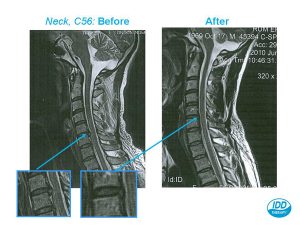MRI Scan Requests
We send people for MRI scans on the lower back or neck to help diagnose people who have trapped nerves. From the images we identify exactly what is happening and what is required. For many of these people we can treat them using our IDD Therapy protocol. This is a non-invasive alternative to surgery.
MRI SCAN
We can order an MRI scan for you at a very affordable price of £235 (most scans are much more expensive) . Moreover the MRI scans are perfomed rapidly, usually the following week, after a request is submitted.
You order an MRI scan directly though us and there is no need for a referral from your GP. The results will be sent through to us and you can then come in to the clinic and the results will be explained and the images interpreted for you so have a clear understanding of your condition.
We typically send people for MRI scans on the lower back or neck to help diagnose people who have trapped nerves or other spinal issues. From the MRI scan images we identify exactly what is happening and what is required regarding treatment. For many of these people we can treat them using our IDD Therapy protocol. This is a non-invasive alternative to surgery and very effective. We also order MRI scans for other areas of the body such as hips, knees or shoulders.
MRI SCANS; HOW DOES AN MRI WORK?
In 2016 there were about 36,000 MRI (magnetic resonance imaging) scanners in the world and about 2,500 are now sold each year. MRI is a relatively new technology (1980’s) and in fact it was only in 2003 Paul Lauterbur, the director of the Biomedical Imaging Centre at the University of Illinois, and Sir Peter Mansfield, a physicist at the University of Nottingham in Britain, received the Nobel prize in medicine for making discoveries that “led to the development of modern magnetic-resonance imaging”.
An X-Ray is essentially a low-cost alternative to MRI. X-Rays utilise small quantities of harmful radiation that travel through the body. This captures a single image of a part of your body to assess injury (fractures or dislocations) or disease (bone degeneration, infections or tumours).
The MRI scanner however uses magnetic and radio waves to create pictures of tissues, organs and other structures within the body, which can then be viewed on a computer. There is no exposure to damaging forms of radiation. The images produced by an MRI scan, when compared to other imaging modalities, are much more detailed and therefore are of higher diagnostic quality. So how does an MRI work?
An MRI machine contains two very large magnets that produce a magnetic field. Basically, MRI scans produce images because our body contains water molecules. As we all know water is made of hydrogen and oxygen molecules (H2O).
These molecules are made of atoms which are in turn comprise of protons and neutrons and electrons. Hydrogen is especially rich in protons. In fact hydrogen, along with oxygen and carbon, make up 99% of the average human body. In an natural state the protons in hydrogen are all randomly arranged but when you turn on a magnetic field these protons align themselves with the direction of the field.
The first magnet which is turned on during your scan aligns all the protons in the water molecules in one direction. A second magnetic field is then quickly turned on and off and this causes the protons to suddenly align and then return to their previous state when the field is turned off.
The scanner picks up these signals and a computer turns them into a picture. These pictures are based on the location and strength of the incoming signals. Different protons send out different signals, depending on which tissue the proton can be found in.
For example, a proton found in bone will emit a very different signal when compared to a proton found in blood. Unlike X-Rays however MRIs are very at diagnosing and imaging soft tissue related problems. The brain, spinal cord and nerves, as well as muscles, ligaments, and tendons are seen much more clearly with MRI
